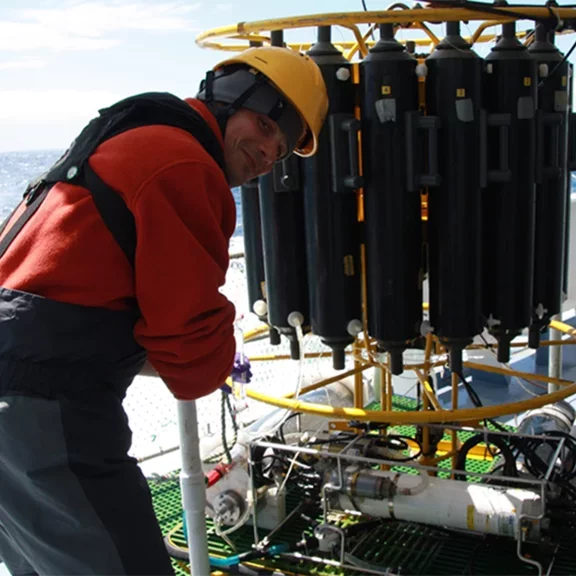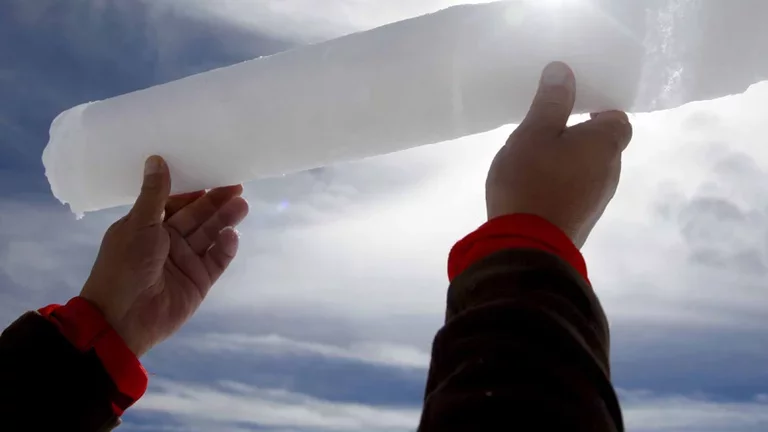Methane, greenhouse gas
Methane, the second most important greenhouse gas after CO2, is very prevalent in aquatic environments. Researchers from Brittany's Station Biologique de Roscoff run by the CNRS and Sorbonne Université, want to understand how the ocean environment regulates methane emissions. Their objective: to gain a better understanding of the role of marine methane in greenhouse gas balances.
Methane and the ocean environment
Methane (CH4) is a fuel with high potential, and enormous quantities are buried underground in the form of natural gas. Also present in the atmosphere, methane is now the second most important greenhouse gas, after carbon dioxide (CO2). Today, 20% of global warming is attributed to methane.
However, the natural processes responsible for CH4 emissions remain ill-defined, especially the role of aquatic environments. Indeed, it is estimated that marine emissions account for 2 to 20% of all natural emissions.
The Groupe Interdisciplinaire d'Etude sur le Climat [Interdisciplinary Group on Climate Research] (GIEC) has observed that most of the CH4 released into marine water bodies could pass into the atmosphere in the form of CO2. The residence time of CH4 is around 50 years for surface waters up to 500 meters deep, and as long as several hundred years for the deepest waters.
Understanding to adjust greenhouse gas balances
The objective of the research team led by Cédric Boulart – CNRS Sorbonne Université / Station Biologique de Roscoff – is to take better account of the role of marine methane in greenhouse gas balances.
The project also aims to evaluate the dynamics of CH4 in varied oceanic systems with a view to providing answers to the following questions:
-
What are the CH4 flows at the air-sea interface and their dynamic in time and space?
-
How and to what extent can the oceans' physical, chemical and biological processes contribute to controlling CH4 flows to the atmosphere?
-
What impact do these processes have on the acidification of marine water bodies?
CNRS Sorbonne Station biologique de Roscoff
High-resolution measurements taken at sea
Cédric Boulart's team is working on the development of new techniques for taking in-situ high-resolution measurements to take into account the great spatial and temporal variability of methane emissions.
The researchers are implementing a new piece of equipment, an In-Situ Mass Spectrometer (ISMS), which allows concentrations of dissolved gases like CH4 and CO2 to be measured in real time during various sea missions.
These offshore missions are carried out in three very contrasting environments:
-
Deep environment: exempt from any disturbance, but able to host point sources of CH4, the dynamics of which remain little known. During the SWINGS 2021 mission (coordinated by the CNRS), which will take place in the Indian Ocean aboard the Marion Dufresne research and oceanographic vessel, ISMS will be deployed to investigate potential deep sources in the Southwest Indian Ridge.
-
Surface ocean: an oligotrophic (little organic matter) system that is characterized by methane oversaturation relative to the atmosphere. It is the site of the so-called ocean methane paradox. Cédric Boulart's team is taking part in mission JC191 in the Atlantic Ocean aboard the RRS James Cook coordinated by the National Oceanography Centre, to better understand the distribution of these anomalies.
-
Coastal environment: exchange zones considered as producing and emitting the most marine methane into the atmosphere. Cédric Boulart's team is carrying out monthly measurement campaigns in the Bay of Morlaix (Brittany) to quantify the transfer of methane from estuary to open sea.
How the Air Liquide Foundation is participating
The Air Liquide Foundation's grant is being used to purchase equipment, including the in-situ mass spectrometer.



